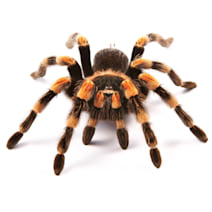Picking the Right Reptile Type for Your Lifestyle and Area
Selecting the suitable reptile type to incorporate right into your living room includes a thoughtful factor to consider of different elements (Reptiles for sale). From the dimension of your home to the quantity of time you can dedicate to their treatment, each aspect plays an important function in determining the most suitable reptile friend for you. By making an informed decision that straightens with both your way of life and available area, you can develop an unified environment for both on your own and your scaly friend
Variables to Think About Before Picking
Before selecting a reptile breed, it is crucial to carefully consider several essential aspects to make certain the best match for both the proprietor and the pet dog. It is crucial to choose a reptile whose size straightens with the space offered in your home to offer appropriate area for the family pet to grow.
Some reptiles, such as particular types of turtles, have intricate care needs entailing particular diets, lights, and habitat needs. Furthermore, element in the reptile's personality and handling demands. Understanding these variables will help you make an educated decision when selecting a reptile type.
Little Reptile Breeds for Compact Spaces
Reptiles Suitable for Busy Lifestyles
Reptiles that are well-suited for active way of lives normally require marginal daily treatment and interest. For people with frantic timetables, low-maintenance reptiles can be a great option to appreciate the friendship of a pet dog without demanding too much time and effort. One appropriate choice for active people is the leopard gecko. These tiny reptiles are easy to look after, needing an easy diet of insects and minimal room upkeep. Leopard geckos are additionally accommodating in nature, making them optimal for handling when time permits. Another choice is the corn serpent, understood for its accommodating temperament and straightforward treatment demands. Corn snakes grow in a simple unit arrangement and have undemanding feeding routines. Additionally, bearded dragons are prominent choices for busy pet proprietors as a result of their fairly reduced upkeep demands. These reptiles have hearty cravings and can prosper on a diet plan of vegetables and bugs. In general, choosing a reptile that fits well with a hectic lifestyle can offer the pleasures of pet possession without overwhelming day-to-day commitments.

Low-Maintenance Reptile Types
Among the various reptile types readily available, some stand out for their low-maintenance needs, making them ideal selections for people with active routines. One such breed is the Leopard Gecko.
One more low-maintenance reptile type is her response the Kenyan Sand Boa. These serpents are recognized for their docile nature and do not require frequent handling. They have small space requirements and feed upon small rats, normally eating as soon as each to 2 weeks. Kenyan Sand Boas are tunneling serpents, so supplying them with an ideal substrate for digging is essential for their health.
Lastly, Corn Snakes are preferred for their vibrant color scheme and ease of care - Reptiles for sale. They have uncomplicated dietary requirements, primarily consuming computer mice or rats, and are normally useful site hardy, making them a great option for novices looking for a low-maintenance reptile companion
Reptiles for Large Settings
For reptile owners wanting to give enough space for their family pets to grow in, certain breeds are especially fit to spacious environments. Big reptiles such as the Eco-friendly Iguana and the Argentine Black and White Tegu need large rooms to suit their size and all-natural behaviors. Green Iguanas, understood for their arboreal nature, require tall units with branches for climbing up, while Argentine Tegus, terrestrial reptiles, take advantage of enclosures with adequate floor room for roaming and excavating.
Monitor lizards, such as the Nile Display and the Savannah Screen, are additionally optimal for large settings as a result of their energetic and explorative nature. These intelligent reptiles require large enclosures with different surface for psychological excitement and workout. The Nile Screen, specifically, is a powerful swimmer and needs to have accessibility to a water function within its enclosure.
Additionally, large snake breeds like the Burmese Python and the Boa Constrictor prosper in large habitats that enable for appropriate movement and exercise. Enclosures for these serpents need to be wide and long adequate to suit their grown-up size, with protected hiding spots for comfort and security.
Conclusion
In conclusion, picking the proper reptile breed for your lifestyle and living area requires mindful factor to consider of aspects such as size, task level, and maintenance needs. Little reptile read this post here breeds are optimal for compact spaces, while low-maintenance reptiles are ideal for hectic individuals. For those with spacious settings, larger reptile types may be preferable. By taking these aspects into account, you can guarantee that you select a reptile that fits effortlessly right into your life and home.
Picking the suitable reptile breed to include right into your living space entails a thoughtful consideration of different factors.When thinking about small reptile breeds for portable spaces, it is crucial to focus on species that can grow in limited living settings. By picking little reptile breeds that are appropriate to living in small areas, you can take pleasure in the friendship of a reptile without jeopardizing their well-being.
In verdict, selecting the suitable reptile type for your lifestyle and living space needs mindful factor to consider of aspects such as dimension, activity degree, and upkeep requirements. Tiny reptile breeds are excellent for small areas, while low-maintenance reptiles are suitable for hectic individuals.